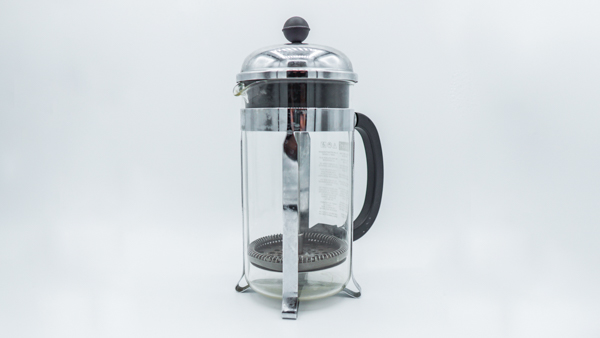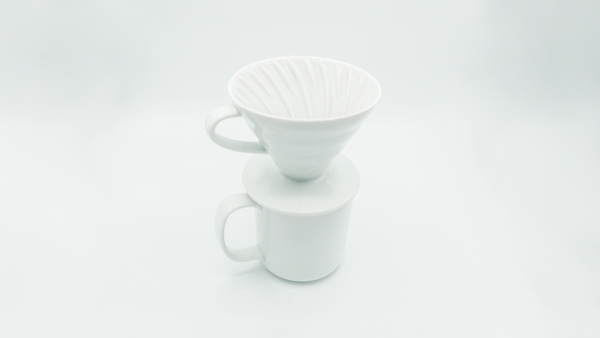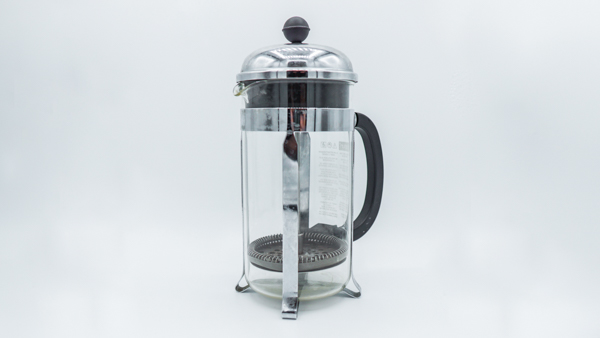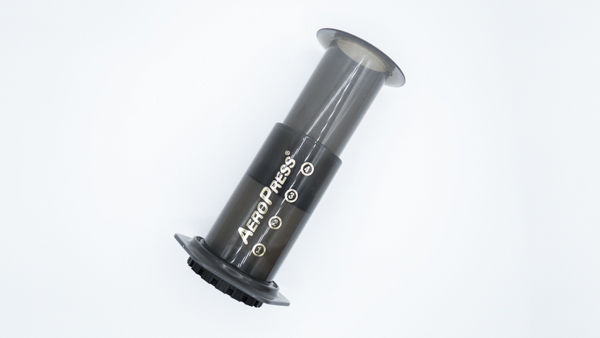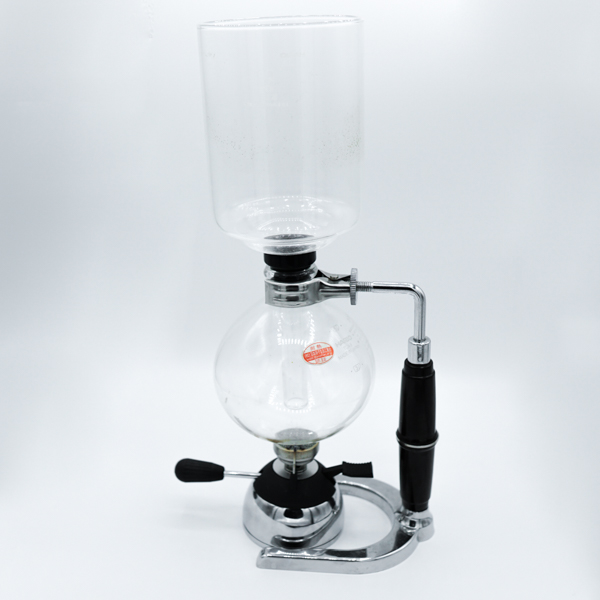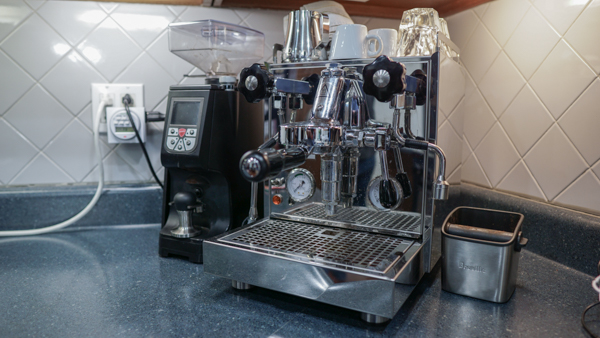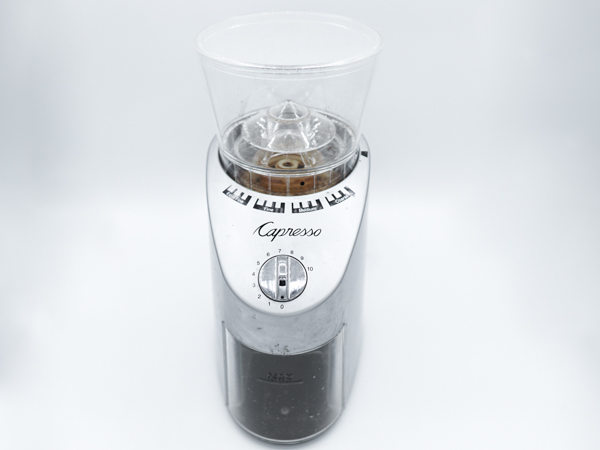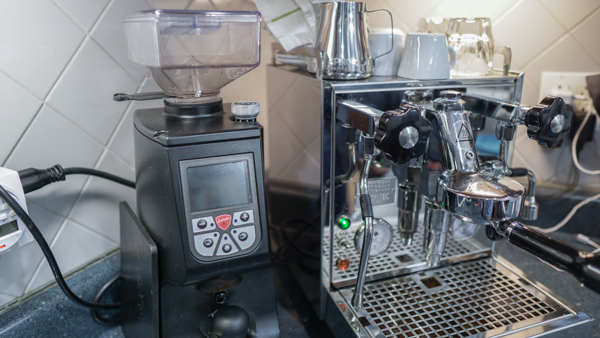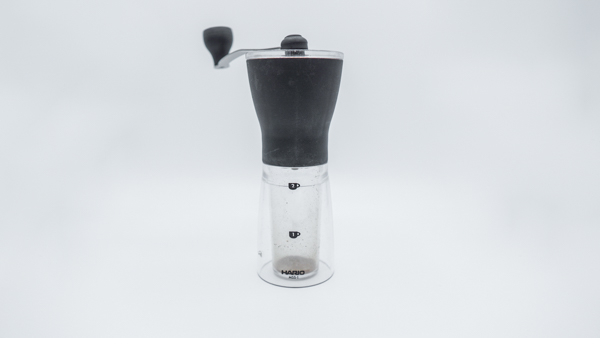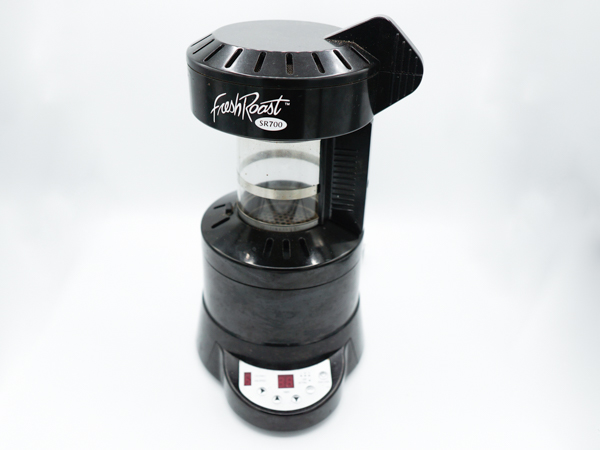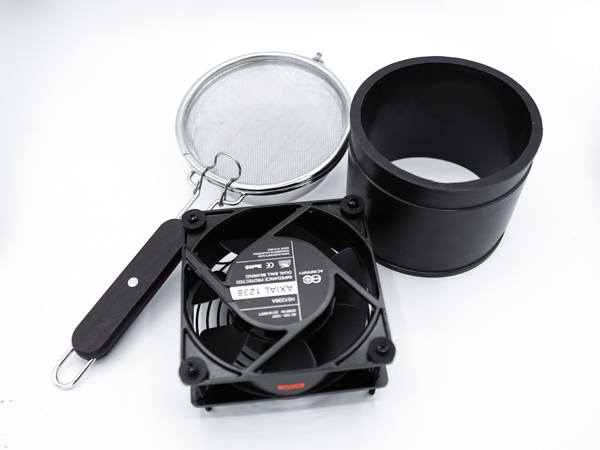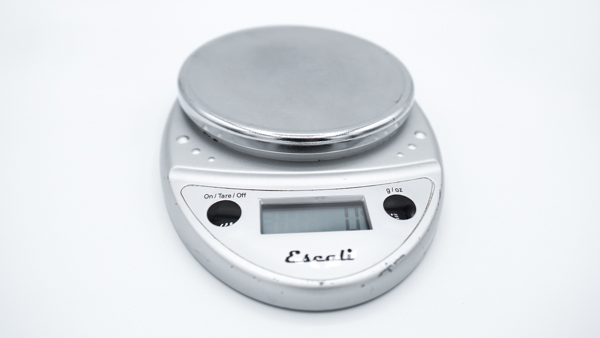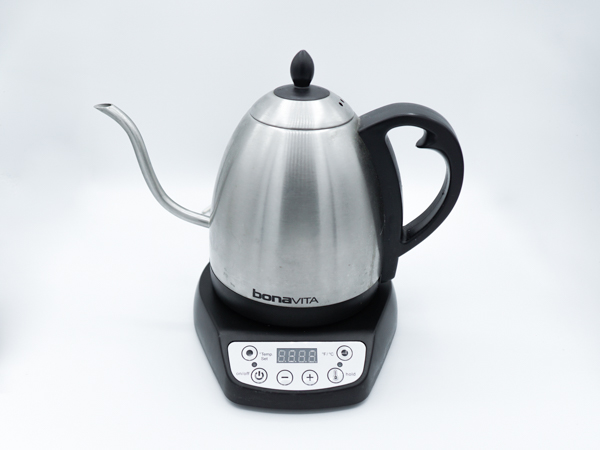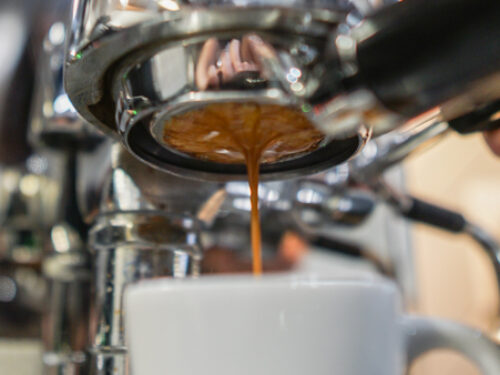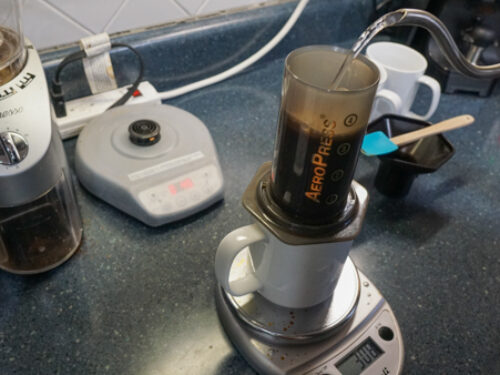Disclaimers: Our site uses demographic data, email opt-ins, display advertising, and affiliate links. Please check out our Terms and Conditions for more information.
As with everything on Hipster Homesteaders, we tailor our articles around our personal experiences in home roasting, brewing, and more. As such, the equipment we use could have a direct correlation to how some of our tests and brews turn out.
In some cases, this may be minimal (the brand of electric kettle you use, for example, likely doesn't matter as long as the temperature can be controlled to within a degree or so). In other cases, this may be significant (such as with a home roaster type and specific roast profile).
To help share more about the products we personally use when roasting, brewing, and developing recipes on this site, we wanted to give a greater look into our home coffee bar. The following are the brands and models have in our home coffee bar and are what you would see if you walked right into our kitchen. (Note: some links may go to the newest model in the same series.)
As we update our bar and change equipment, we will update this guide accordingly to be an accurate reflection of what we use right now.
To purchase your own coffee equipment to expand your home bar, click the links at the end of each section to be taken to Amazon or relevant 3rd party sites when appropriate. To learn more about how we use each of the coffee machines, click the link included in each entry when available.
To jump to a specific section of this guide, click the following links:
Note: More/updated photos will be added soon!
Coffee Brewing Equipment
The following are all of the coffee brewing devices we have in our home bar.
Pourover – Hario V-60
Is there anything better than a well-made pourover? This method of brewing is one of our favorites for its versatility in brewing various beans and roast styles, and for testing as a means to balance brewing temperature, grind settings, and weight ratios to get the best extraction. This all comes together for a strong brew bursting with flavor that we make day after day.
To purchase a pourover, click here. To purchase pourover filters, click here.
Other equipment you may need to make a pourover: burr coffee grinder, electric kettle, kitchen scale, coffee cups.
French Press – Bodum
In need of getting the best punch from a darker roast? French Press should be for you. This is among the easier brewing methods to have at home as the coffee-water contact is contained within the vessel. All you have to do is dial in your grind, temperature, and put on the timer before a quick plunge to filter everything!
To purchase a French Press, click here.
Other equipment you may need to make a French Press: burr coffee grinder, electric kettle, kitchen scale, coffee cups.
Aeropress
Aeropress is our preferred coffee brewing implement when we're on the go as it is a (somewhat) small, portable machine that is a saving grace when you do not want to drink hotel coffee any longer (and have access to hot water in your room or, if you're fast, from an on-site restaurant). This one brews in a tiny plastic chamber with a filter paper at the bottom, with contact brewing similar to that of a French Press. But rather than using the plunger to hold back the grounds when you decant, this one uses the pressure generated to force the coffee through the filter paper and leave the coffee grounds behind. Simple, efficient, and actually makes a pretty damn good cup of coffee.
To purchase an Aeropress, click here.
Other equipment you may need to make an Aeropress (on the go): hand grinder, electric kettle, portable coffee mug, filter paper, coffee cups.
Drip Coffee – Mr. Coffee 12-Cup Programmable
Have a lot of people over and no time to make individual pours of coffee? Bring out the drip coffee maker! While the science behind drip coffee makers is pretty basic, hot water is dripped over a large amount of coffee grounds for an extraction purely based on volume. The amount of control you have over this is often limited as the machine typically does all the work, but it serves its purpose all the same. For coffee nerds like us, while a necessary machine to have, it is also fairly boring.
To purchase a drip coffee maker, click here.
Other equipment you may need to make drip coffee: burr coffee grinder, filter paper, coffee cups.
Moka Pot – Bialetti 6-Cup
In a way, a moka pot is a cheap coffee brewer that comes close to that of an espresso machine. Water is located in a bottom chamber, and when placed on a stove top it comes to a boil. This steam increases in pressure and passes through coffee grounds in a center chamber, and percolates over into a top vessel where it can be poured. The result is an intensely flavorful coffee and smaller portions like that of an espresso (although variants of this pot exist in all sizes).
To purchase a moka pot, click here.
Other equipment you may need to make a moka pot: burr coffee grinder, kitchen scale, espresso cups, replacement o-rings.
Siphon Filter – Hario
As engineers, we are fascinated behind the science of coffee brewing, and to visualize the science of coffee brewing there is nothing more enjoyable than a Siphon Filter. In a way, this is a glass variant of the above moka pot that is designed to heat up over a butane burner instead of a stove. The main design difference in this one is that the coffee grounds are not located in a separate chamber, but are instead poured into the top vessel. As water is heated, the increased vapor pressure just before boiling, will cause the water to migrate up into the top zone where it will steep the coffee (comparable to a French Press). When the extraction is finished, simply turn off the water and the coffee will pass through a filter to separate the liquid from the grounds. Unscrew the bottom vessel and pour after enjoying science at work!
To purchase a siphon coffee filter, click here.
Other equipment you may need to make siphon coffee: burr coffee grinder, kitchen scale, butane burner, butane, extra filters, coffee cups.
Espresso Machine – Profitec Pro 500
There may be some equipment that imitates that of an espresso, but nothing beats the real thing. These robust machines accomplish brewing by pressurizing heated water to force it through finely-ground coffee. This quick, hot burst of water on fine grounds produces an incredible pull of coffee that really lets the flavors of the bean shine. But on the downside, espresso machines also are the most expensive, have the biggest learning curve, and require routine cleaning and maintenance to keep in top shape. But it is worth it.
To purchase a Profitec Pro 500, click here. More espresso machines can be found on Amazon.
Other equipment you may need to make espresso: espresso grinder, bottomless portafilter*, tamper*, tamping mat, frothing cup, Cafiza (cleaner), kitchen scale**, espresso cups, cortado cups, latte cups, programmable electrical timer, and knock box.
Product Notes:
*Portafilters come in different sizes specific to each espresso machine. Tampers are often designed to accommodate these as well. The linked products are a match to our specific espresso machine, but may not match other brands.
**You may need to purchase a smaller kitchen scale for your espresso machine depending on clearances between the cup and portafilter. The larger kitchen scale we use works fine in our machine, but a smaller scale may be useful here for others.
Coffee Grinders
The following are the coffee grinders we use in our home bar.
Burr Grinder – Capresso 565 Infinity
Burr grinders are ideal for coffee as the act of grinding is done between two abrasive plates that are calibrated a fixed distance apart. This allows for a repeatable and uniform grind that can also be adjusted with relative ease. The Capresso 565 Infinity is our current burr grinder as it has 16 settings ranging from fine to coarse that we can adjust for most brewing methods outside of espresso. While the mechanism for adjustment is a bit fragile, it has gotten the job done for us for many years.
To purchase a burr grinder, click here.
Espresso Burr Grinder – Eureka Atom
What is the difference between an espresso burr grinder and a traditional burr grinder? It all has to do with the fineness of the grind. On a conventional burr grinder, you can have a wide range of settings to dial in between fine and coarse, but are inherently limited on the finer end- which simply won't be good enough for espresso. For an espresso grinder, you're doing the same exact thing but dialing in a grind to a much finer degree. This requires more technically designed equipment, which is more expensive, and most certainly worth a hefty investment. In fact, if you're struggling between buying a more expensive grinder or a more expensive espresso machine, I would err on the side of a better grinder!
To purchase an espresso grinder, click here.
Hand Grinder – Hario Coffee Mill
The Hario Coffee Mill is a hand-powered ceramic burr grinder that can be adjusted between coarse and fine settings. While this one requires your own body energy to operate, we love this one purely because it is portable. When we go on trips where we take our own coffee, odds are good you'll find this small grinder in our bag along with our Aeropress to make better hotel coffee in a pinch.
To purchase a hand grinder, click here. To purchase an Aeropress, click here.
Coffee Roasting Equipment
The following are the equipment we use for home roasting coffee.
Coffee Roaster – Fresh Roast SR700
The Fresh Roast line of coffee roasters operates on a fluidized bed principle. Hot air is shot up through a tube, and its sufficient flow rate causes coffee beans to float and “mix.” Over time, this heated air causes coffee to roast, chaff to flake off and be collected in a separate chamber, and, along with temperature and flow rate settings, gives a fair bit of control to the user in the roasting process all while being fairly economical.
One of the things we love most about the SR700 model is that it could connect to a computer and be run on open-source software. This allowed for roast profiles to be fine-tuned for any given bean, controlled automatically, and the software even allowed for file exporting for sharing. Sadly, the newest model (SR800) is fully manual and does not allow for computer control- something we sincerely hope returns in future models.
To purchase a Fresh Roast, click here (Fresh Roast SR800 linked).
Cooling Equipment – Homemade
One of the major rules of coffee roasting is that you simply cannot let beans cool down in room temperature air. They will remain hot for quite a bit of time and essentially continue to bake- ruining some of the flavors achieved in the roasting process. While the Fresh Roast unit can turn the heat off and continue to fluidize coffee beans using cool air, the residual heat stored in the glass chamber does not allow the beans to cool down rapidly enough (conventional wisdom says beans should be cool to the touch within 2-3 minutes for best flavor). As such, we built our own cooling system with a cheap fan, a perforated chamber, and a plastic tube to help channel the airflow. This design can cool about 100 g of roasted coffee in under two minutes with little extra effort.
To purchase cooling equipment, click the following links to build your own: fan, container, and tubing.
Other Necessary Accessories
The following are additional products you will likey need in your home bar for making coffee at home.
Kitchen Scale – Escali Primo
Coffee brewing is all about consistency, and one of the biggest things you can do to have a consistent brew is to measure out a mass of coffee beans and water used in every brew. So a trusty home scale with a tare function is exceptionally important to have! We use our Escali for every brewing method, although for some espresso machines you may want to purchase a smaller scale for clearance as well (although we personally do not use one with our espresso machine).
To purchase a kitchen scale, click here.
Electric Kettle – Bonavita with Gooseneck Spout
Like measuring out a mass of coffee and water, controlling your water temperature is important for a consistent brew time and time again. Our electric gooseneck kettle allows for temperature to be controlled within 1 degree Fahrenheit and gives us that much more control in optimizing our brewing at home. This particular model also has a built-in scale, which is another necessity in measuring contact time.
To purchase an electric kettle, click here.
Have a product you'd like us to try out in a future test or review? Comment below to share!

